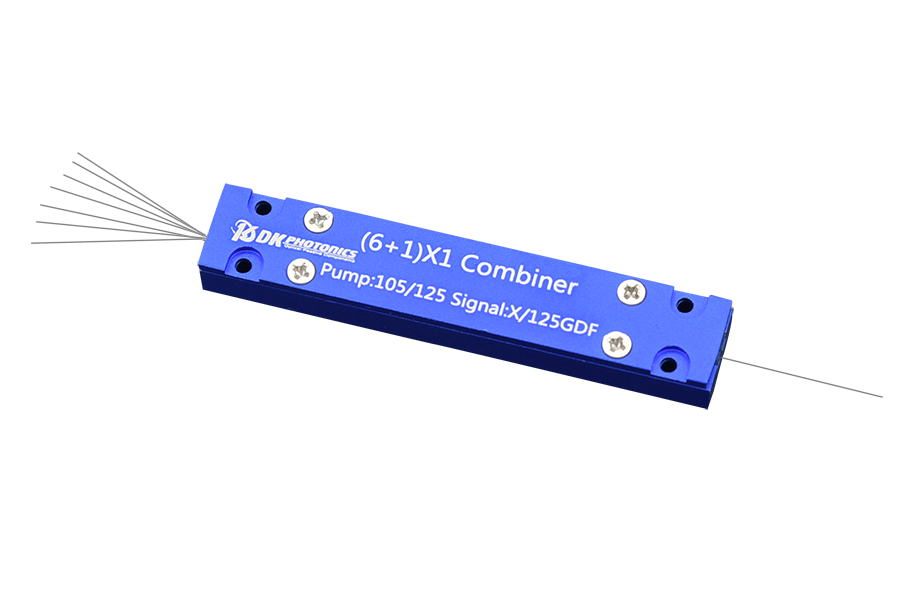In fiber laser and amplifier systems, there are two types of combiners – the pump combiner and the pump and signal combiner. Although they sound similar, these two devices have different functions.
Pump Combiner
We discussed the pump combiner in the previous blog. To recap, a pump combiner takes light from multiple pump laser diodes and combines it into one output fiber. This concentrated pump light then goes into the rare-earth doped fiber to create the laser.
Pump and Signal Combiner
A pump and signal combiner is a different type of component. As the name suggests, it combines both the pump light and the laser signal light into a common output fiber.
How Pump and Signal Combiner Works
The pump and signal combiner has two separate input ports or fibers. One input accepts the combined pump light from laser diode sources. The other input accepts the laser signal light.
Inside the combiner, these two inputs are combined using special optical components or fiber geometries. The combined pump and signal then exits through a single output fiber or port.
The key point is that the pump light and the laser signal light enter the combiner separately. They are then coupled together before exiting as one mixed output beam.
Purpose of Pump and Signal Combiner
So what is the purpose of combining the pump and signal light together in one fiber? It enables configurations where both the pumping and the lasing happen in the same fiber.
This is useful for fiber amplifiers and certain types of fiber lasers. The pump light pumps or energizes the doped fiber core. The lasing or amplification of the signal light then occurs within that same core.
Applications of Pump and Signal Combiner
Pump and signal combiners enable different architectures for fiber lasers and amplifiers:
Fiber Amplifiers: The combiner couples the pump light into the doped fiber while also injecting the input signal to be amplified.
Fiber Lasers: For certain resonator designs, the combiner feeds both pump and lasing signal into the same doped fiber cavity.
Pump Delivery: The combiner provides a way to couple pump light into the signal fiber for Raman amplification or fiber component testing.
Key Differences from Pump Combiner
While pump combiners and pump and signal combiners seem similar, they have some key differences:
Number of Inputs: A pump combiner has multiple pump inputs but no separate signal input. A pump and signal combiner has one pump input and one signal input.
Purpose: A pump combiner only combines and directs the pump light. A pump and signal combiner overlays the pump and signal paths.
Applications: Pump combiners are used for pumping the gain fiber. Pump and signal combiners enable lasing/amplification within the pump fiber itself.
Combining Technique: Pump combiners use fused tapers/bundling to combine pump inputs. Pump and signal combiners use wavelength selective combiners or special fiber geometries.
So in summary, a regular pump combiner only deals with combining the pump sources. A pump and signal combiner does the extra step of overlapping the pump light with the signal light into a common fiber path.
Which one is used depends on the specific laser or amplifier architecture and whether pumping and lasing/amplification happens in separate or common fiber paths.


Leave A Comment